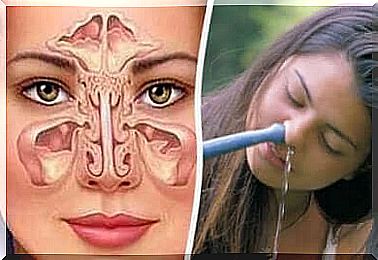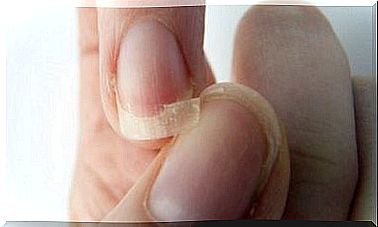Nasal Rinsing: 3 Different Types
When inhaling, allergens get into the nose, which can lead to an asthma attack or other complaints. In this case, nasal rinsing is very beneficial, but it must be done correctly. Find out more about this topic today.

In a nasal rinse certain basic rules must be observed, especially when it is carried out in babies. This is because they cannot yet breathe through their mouths and when their noses are blocked it is very difficult for them to breathe.
Many children these days suffer from increased nasal discharge due to pollution, early socialization, and common allergies that lead to respiratory problems.
So today we are introducing you to three techniques for properly performing a nasal rinse .
Why is it so important to do nasal irrigation properly?

Most of the time we breathe in through the nose, which has the function of humidifying, filtering and warming the air before it enters our body. Particles and allergens get into the nose, which, among other things, could trigger an asthma attack.
In this case, a nasal douche can bring relief if done correctly. This is particularly important for babies because, as already mentioned, they cannot yet breathe through their mouths.
A nasal rinse is done using salt water to cleanse the nasal cavities of mucus and remove allergens that are washed out by the water.
The goal is to flush out as many particles and allergens as possible in order to alleviate allergies and clear the airways. However, the nasal douche can also be used in other circumstances:
- For chronic or acute rhinosinusitis
- In the case of retronasal discharge with chronic cough
- Pretreatment when administering nasal corticosteroids
- Care after endonasal surgery
Recommendations for a nasal rinse in a child
For babies, physiological saline solution from the pharmacy is usually used to clean the nose. So that the small child feels more comfortable and can breathe better, you can do as many nasal showers as necessary.
This is usually uncomfortable for the child and therefore a bit complicated. However, we have some tips for you below to make it easier for you:
- Do the nasal douche before sleeping and before breastfeeding.
- You can lay your baby on their back or stomach, but with their head on their side. Be careful that your little darling doesn’t tilt his neck back.
- After the nasal rinse, it is recommended that the child sit up to make it easier to expel the discharge.
- If the nose is severely congested, you can use some saline solution and do a gentle massage. Then use a few more drops of saline solution.
- Older children are able to do the nasal douche themselves. The head is bent to one side and then to the other.
3 techniques for nasal irrigation
1. Lie on your back with your head turned to one side

This is the most widely used technique, but not the most effective. In this position, the saline solution is introduced vigorously with a syringe or a special nasal douche.
This cleans the front part of the nasal cavity. It’s a quick, easy method, but it doesn’t get the saline solution into the back of the mucus where mucus builds up.
Therefore, this method is not suitable if there is a lot of viscous mucus. Because the saline solution bounces back on it.
2. Sitting down
This type of nasal cleansing is especially used for older children. While sitting, the head is bent forward, then the physiological saline solution is injected into a nostril and the child pulls it upwards so that the solution works. This technique cannot be used on babies.
As with the previous method , the rear areas inside the nose cannot be reached while sitting. Therefore it is not very helpful in the case of heavy mucus.
3. Lie on your back or seated with your head bent back
This method is very effective. Because if you tilt your head back , the saline solution is absorbed slowly and without pressure. It runs backwards towards the throat and takes some of the mucus with it.
The nasal secretions that adhere to the nasal walls are softened by the liquid and the child can then breathe in forcefully so that the deep-seated mucus falls into the throat to swallow or expel.
When the child is very young, you close their mouth to take advantage of the crying and thus achieve intense inhalation through the nose.









